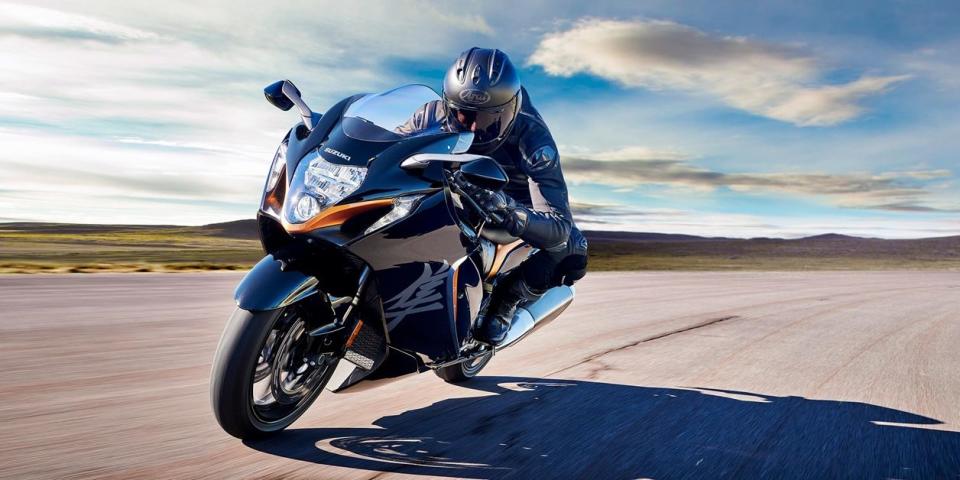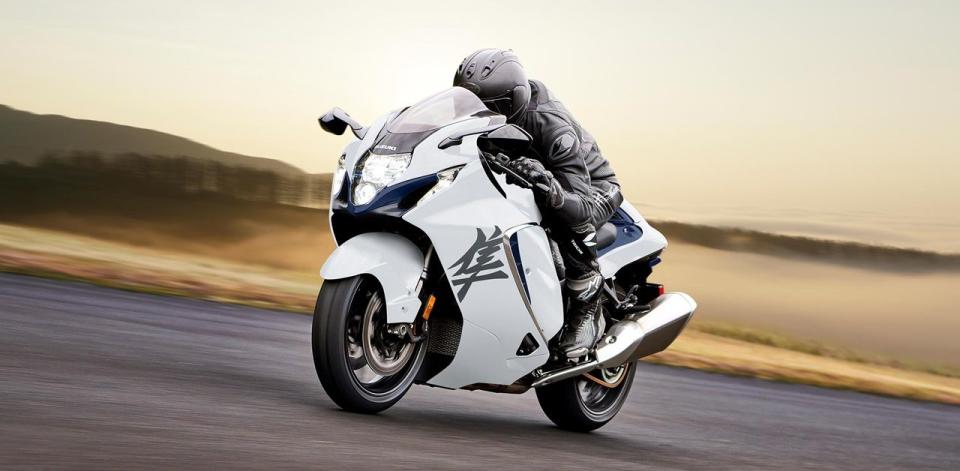Suzuki’s Hayabusa Is the Greatest Motorcycle Ever Made

When the Suzuki Hayabusa debuted in 1999, it was the fastest stock motorcycle ever made, with a top speed of 186 mph.
In order to meed strict Euro 5 emissions standards, Suzuki revised the engine, tuning for performance and clean exhaust but also removing excess weight in almost every component.
The Hayabusa also gets a suite of electronics, including an inertial measuring unit that measures pitch, yaw, dive, squat, slip, and lift.
There are many motorcycle enthusiasts who consider the Suzuki Hayabusa the best motorcycle ever made, and they may be right, depending on how you measure these things. It is quick, it is fast, and it is a thing of beauty to behold. But it has its own set of characterful quirks that may make it not the bike of choice for just everyone. You almost have to know all about it and endear yourself to its history and character before you can get in line to call it the best bike ever made.
The first Hayabusa came out in 1999 and pretty much immediately set the record for the fastest stock motorcycle ever made at 186 mph. Or maybe it was 194 mph. Sources differ. But it was fast. It also quickly became a favorite of drag racers, who used its long, long wheelbase for stable rocket launches down the strip. Again, sources disagree but several cite a quarter-mile time for that original first-gen Hiyabusa at under 10 seconds right out of the box. Cycle World recorded a 0-60 mph time of 2.47 seconds way back in 2002.
So with numbers to make bike enthusiasts swoon, the Hiyabusa almost immediately became a thing of legend and has stayed that way in the minds of many fans who grew up with it.
The second-gen came out in 2008 with a revised and even more powerful engine making 194 hp, up by four from the first-gen.

And now, behold, the third-generation Suzuki Hayabusa. We should be glad that it’s even here, as ever-stricter emissions regulations around the world almost killed it. To meet those regs—mostly Euro 5 but others around the world as well—engineers had to scramble to come up with a balance of engine performance with crystal clear exhaust gasses that would please government bureaucrats without losing the faith of the faithful. The compromise required going through the entire engine from top to bottom, tuning for performance and clean exhaust but also removing excess weight in almost every component. When all was said and done, the 1340-cc liquid-cooled transverse-four actually made less horsepower and torque, but it passed Euro 5. Hooray! Output of the new engine is 187 hp at 9750 rpm and 110 lb-ft at 7000 revs. That’s down from 194 hp and 114 lb-ft, but you’d only notice way up at the top of the tach. You would really notice if there was no Hayabusa at all. So I say it’s a worthwhile tradeoff.
The more significant change is in the introduction of a whopping big suite of electronics that will save your leather-wrapped hide, or allow you to drift and wheelie your way down the road as much or as little as you want. For 2022, the ‘Busa gets an IMU, or inertial measuring unit, sort of an inner ear for the motorcycle that measures pitch, yaw, dive, squat, slip, lift, and lots of other things. The IMU works in concert with the ABS, traction control, and everything else in the Suzuki Intelligent Ride System, or SIRS. It’s a Forbin Project of electronics that does a lot of the thinking and acting for you—or that allows you to do it yourself. Your choice. There are adjustments available to address almost everything a motorcycle might try to do: 10-stage wheelie control, three-stage launch control, three pre-set and three customizable power modes, three-stage engine brake control, two-stage up-and-down (bidirectional) shift control, cornering ABS, cruise control, active speed limiter, hill-hold control, and slope descent control to keep the rear wheel on the ground as you brake coming down a hill.

 Yahoo Autos
Yahoo Autos 